Understanding the Benefits of a Calendar Scheduler Tool for Teams

Introduction
In the fast-paced and often chaotic landscape of modern work, a well-structured team calendar emerges as an essential tool for fostering collaboration, enhancing productivity, and improving overall efficiency. Gone are the days when scheduling meant endless email chains and confusion over availability. With the rise of innovative calendar tools, teams can now enjoy a streamlined approach to managing their commitments, creating a shared space that promotes transparency and accountability.
From the educational sector to rapidly expanding tech companies, organizations are discovering the transformative benefits of centralized scheduling systems. This article delves into the myriad advantages of utilizing a team calendar, exploring how it not only alleviates the stress of daily tasks but also cultivates a culture of cooperation and clear communication within teams. Whether it’s improving coordination, enhancing time management, or choosing the right tool, understanding the impact of a well-implemented calendar can redefine how teams operate, enabling them to focus on what truly matters.
Benefits of Using a Team Calendar
A group calendar functions as more than merely an organizing instrument; it acts as a catalyst for operational efficiency and collaboration. By consolidating appointments and deadlines into one accessible platform, everyone gains clarity on their responsibilities, significantly diminishing confusion and the risk of timetable conflicts. This improved clarity not only fosters a more unified work atmosphere but also enables groups to focus on their tasks without the continual disruptions of email communications.
For instance, the Twinkl group in educational publishing has leveraged tools like Toggl Track to streamline their scheduling, resulting in happier, more productive individuals who can better meet campaign expectations. Similarly, Dynatrace, which has rapidly expanded its workforce from six to over 200 distributed employees, faced challenges in establishing an effective meeting process. By establishing a unified schedule, they can now guarantee that all members are coordinated, promoting a culture of cooperation throughout their international offices.
Moreover, that 58% of American workers feel overwhelmed by daily tasks, often neglecting broader objectives. A well-organized group schedule can reduce this load, enabling staff to handle their time more efficiently. By incorporating a philosophy of ongoing enhancement through a common planning tool, organizations can not only boost productivity but also adjust to evolving circumstances and priorities, ensuring that all members are aligned.
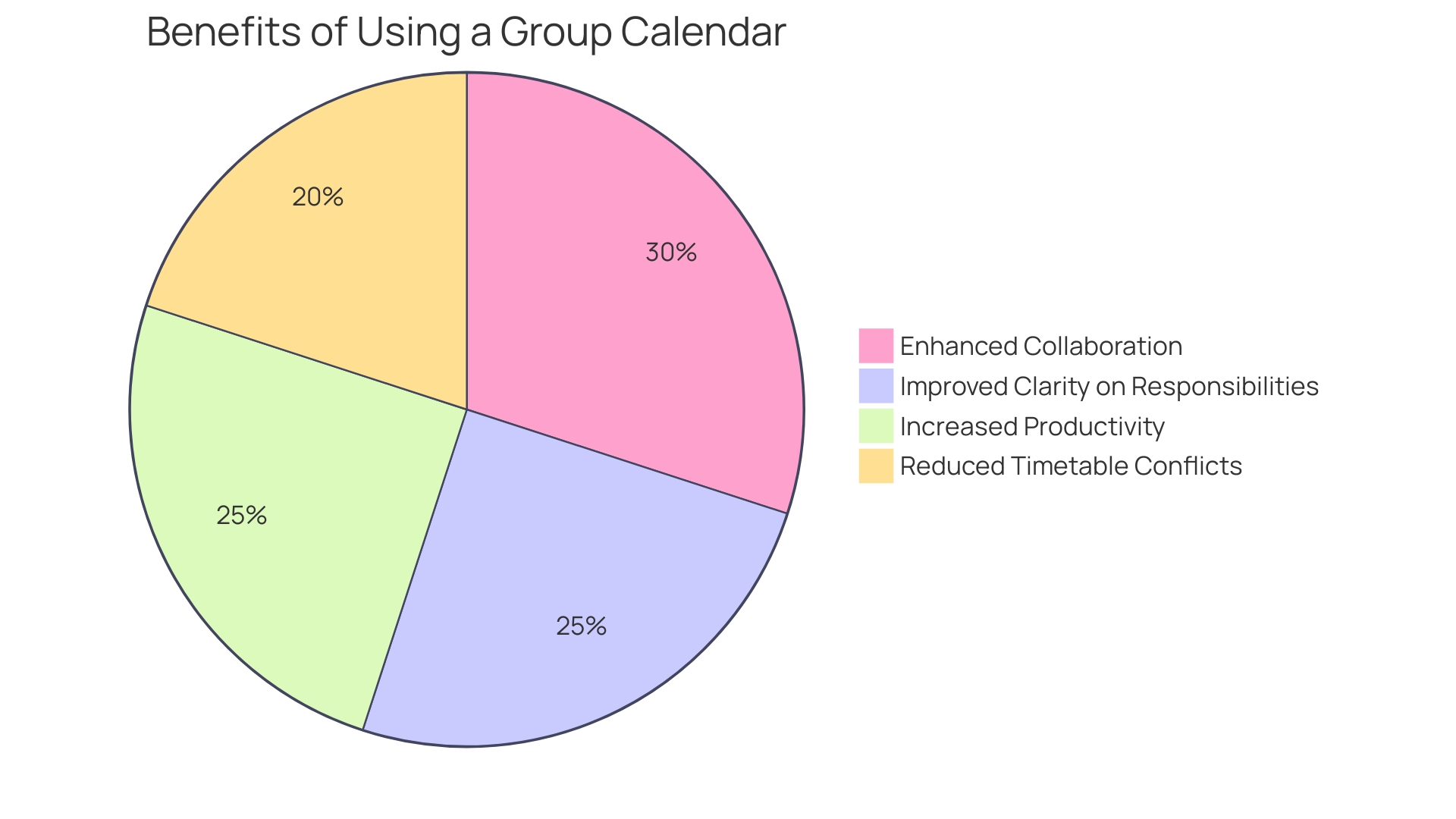
Improved Coordination and Scheduling
Efficient calendar organization greatly enhances group coordination by offering a consolidated perspective of availability throughout. This transparency eliminates the tedious back-and-forth of emails and messages, allowing team members to effortlessly identify when everyone is free to meet. In a time when 58% of American employees feel burdened by their daily responsibilities, having an efficient planning procedure can be a game changer. ‘The implementation of resources such as Cal.com tackles the usual frustrations linked to , where managing paper agendas and frequent rearranging can result in inefficiencies.’.
A standout example is Dynatrace, a rapidly growing software observability platform. As they expanded from six to over 200 employees in just five years, the need for an efficient meeting process became paramount. With group members spread across North America and beyond, the old ways of meeting—like daily in-person stand-ups—soon became impractical. Using an automated planning system not only streamlined their meeting logistics but also guaranteed that all team members could participate meaningfully, regardless of location.
‘Innovations in planning applications, such as the new features in Calendly’s browser extension and Clockwise’s AI-powered assistant, are making appointment management even more efficient.’. These resources enable individuals to join, cancel, or reschedule meetings effortlessly and even propose different times when conflicts occur. Such advancements reflect a broader trend in the planning landscape, which aims to cater to diverse needs—from NGOs to multinational enterprises, ensuring that everyone can find a suitable solution.
In this dynamic environment, adopting an effective planning tool can be the key to enhancing collaboration and productivity, making it easier for groups to focus on what truly matters.
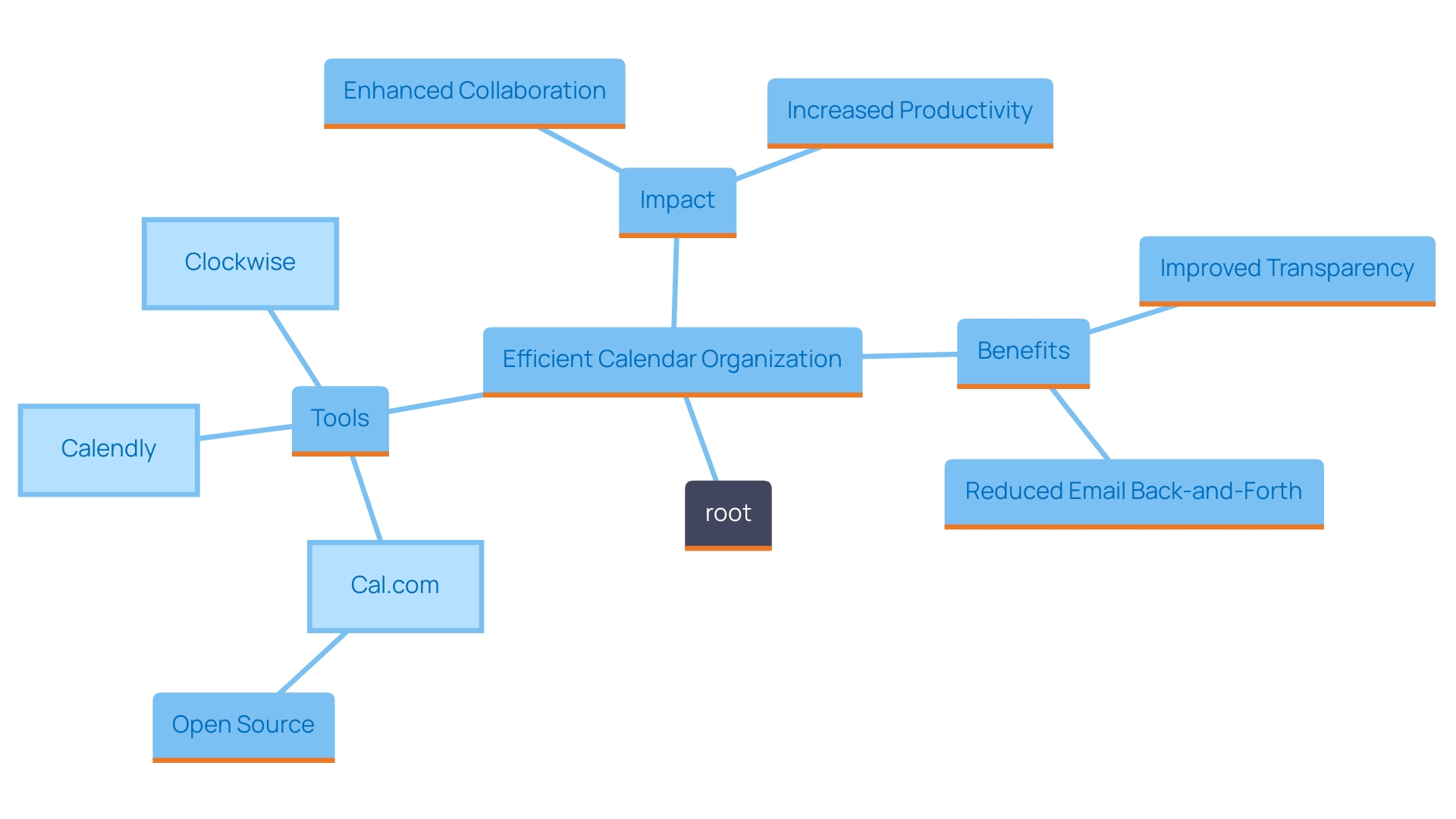
Enhanced Transparency and Accountability
A shared calendar significantly improves clarity within groups. Team members gain visibility into each other’s commitments, fostering a culture of accountability. This openness not only helps in tracking progress but also ensures that deadlines are met effectively. For instance, as Stephen Hull, VP of Customer Experience at Dynatrace, faced the challenges of rapid group growth—from six to over 200 employees—implementing a became crucial. With employees spread across North America and beyond, the absence of a structured meeting process hindered their ability to collaborate effectively.
Moreover, when everyone can see scheduled tasks and meetings, it becomes easier to coordinate efforts across different functions. This collective awareness nurtures trust and boosts group morale. In agile organizations, like La Mobiliere, cross-functional groups must align their goals while managing various departmental applications. This necessitates a clear communication channel to ensure that everyone’s efforts are synchronized.
The benefits of such transparency are echoed in studies showing that well-structured operating systems not only clarify expectations but also promote continuous improvement. As Tacy M. Byham, Ph.D., highlights, regular check-ins, such as 1:1 meetings, are vital for resolving complex work problems and fostering a psychologically safe environment. By using collective schedules, groups can create a cadence that improves efficiency and fosters a positive work environment.
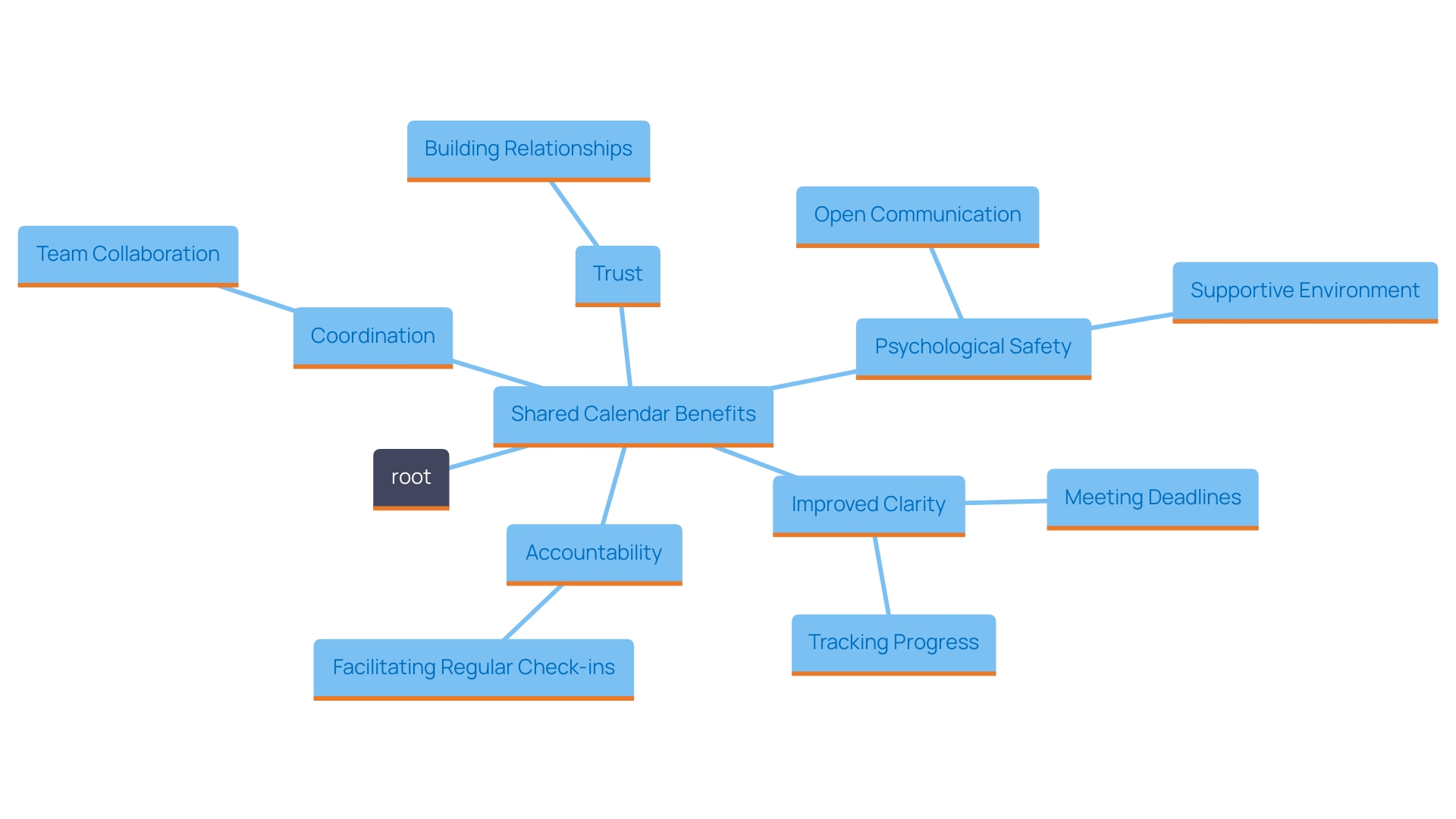
Better Time Management
A calendar management resource plays an essential part in improving time organization among groups. By offering a clear visual depiction of commitments, these tools enable group members to prioritize tasks efficiently based on deadlines and importance. This proactive approach reduces the chaos often associated with last-minute rushes, fostering a more balanced workload.
Consider the experience of Twinkl, a group in the educational publishing sector that utilized Toggl Track for their scheduling needs. By streamlining their schedule management, they saw a notable increase in productivity and team morale, leaving behind the headaches of inefficient time allocation. With 58% of American workers feeling overwhelmed by their , resources like these are more than just conveniences; they are essential for ensuring that priorities are met without the stress of constant urgency.
In today’s fast-paced environment, where distractions abound, having a well-organized schedule can be the difference between success and chaos. As organizations increasingly recognize the importance of maximized efficiency, the appropriate scheduling tools can significantly affect overall performance, allowing groups to accomplish more with less effort.
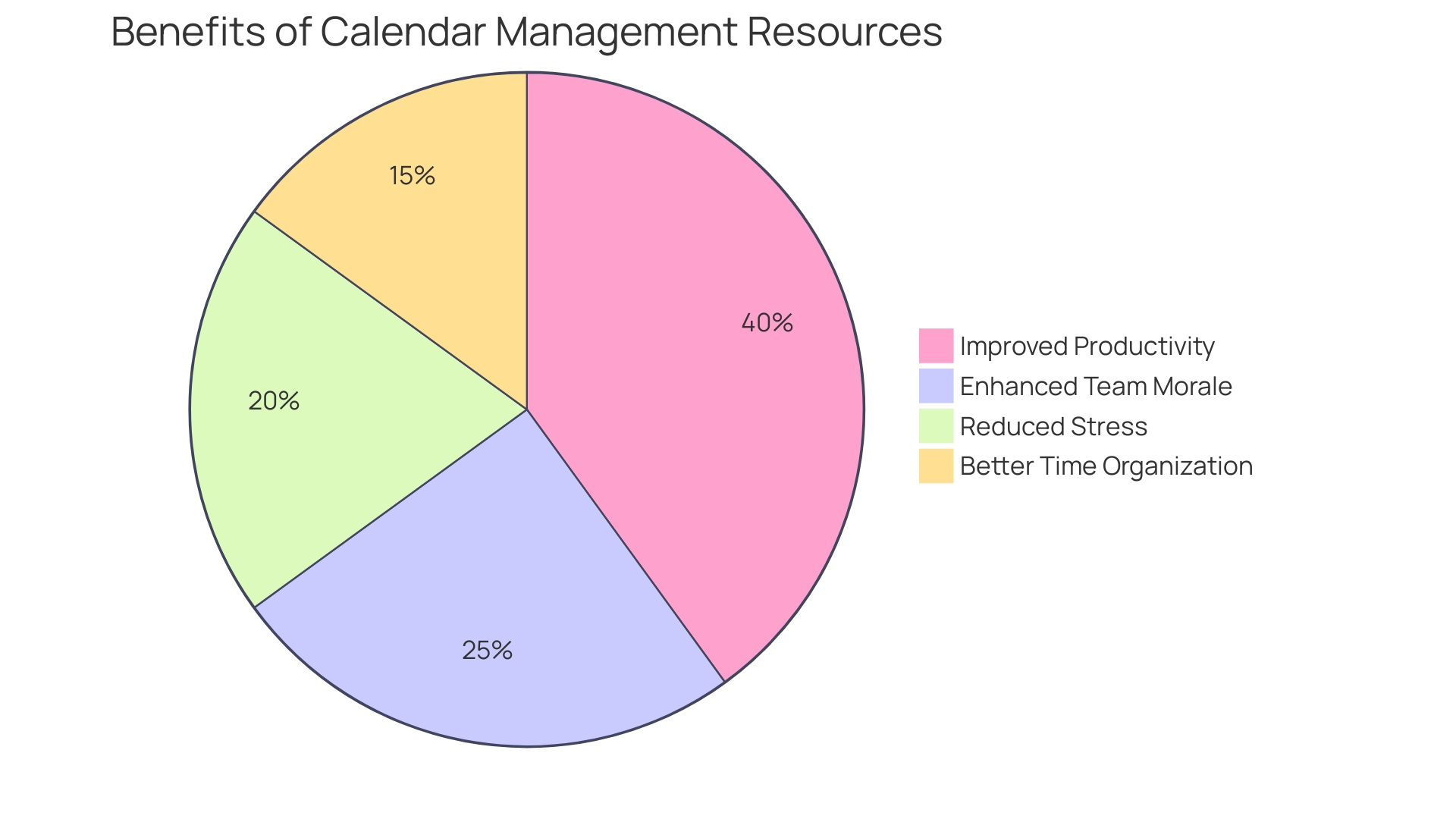
Enhanced Collaboration
Efficient cooperation is based on smooth communication, and a well-organized group calendar can greatly improve this dynamic. By creating a common area where all group members can share their schedules, everyone stays updated on current projects and deadlines. This transparency simplifies the planning of joint initiatives, the sharing of resources, and the alignment of goals.
When group members are aware of each other’s commitments, the potential for overlap and decreases dramatically. A lively scheduling application serves as the foundation of an efficient operating system among the group, assisting in clarifying roles and responsibilities. As noted in various research, organizations benefit greatly from embedding an ethos of continuous improvement in their collaborative processes. For instance, the Toyota Production System exemplifies how structured yet flexible operating systems can lead to remarkable productivity gains by ensuring all members understand how they create value collectively.
Moreover, statistics reveal that the average employee is only productive for about 2 hours and 53 minutes per workday, emphasizing the need for efficient time management tools. In fact, 58% of American workers feel overwhelmed by daily tasks, often sidelining strategic planning. Employing a scheduling method that promotes active involvement can ease this load, enabling groups to concentrate on high-impact tasks instead of becoming overwhelmed by logistical difficulties.
In a real-world example, a Latin American bank faced significant hurdles during a digital transformation project due to unclear expectations among team members. Their initial lack of a cohesive time management approach led to frustration and inefficiencies, underscoring the importance of clear communication supported by a strong planning system. By utilizing efficient planning tools, the bank ultimately enhanced teamwork and simplified their processes, emphasizing how a well-structured timetable can act as a catalyst for success.
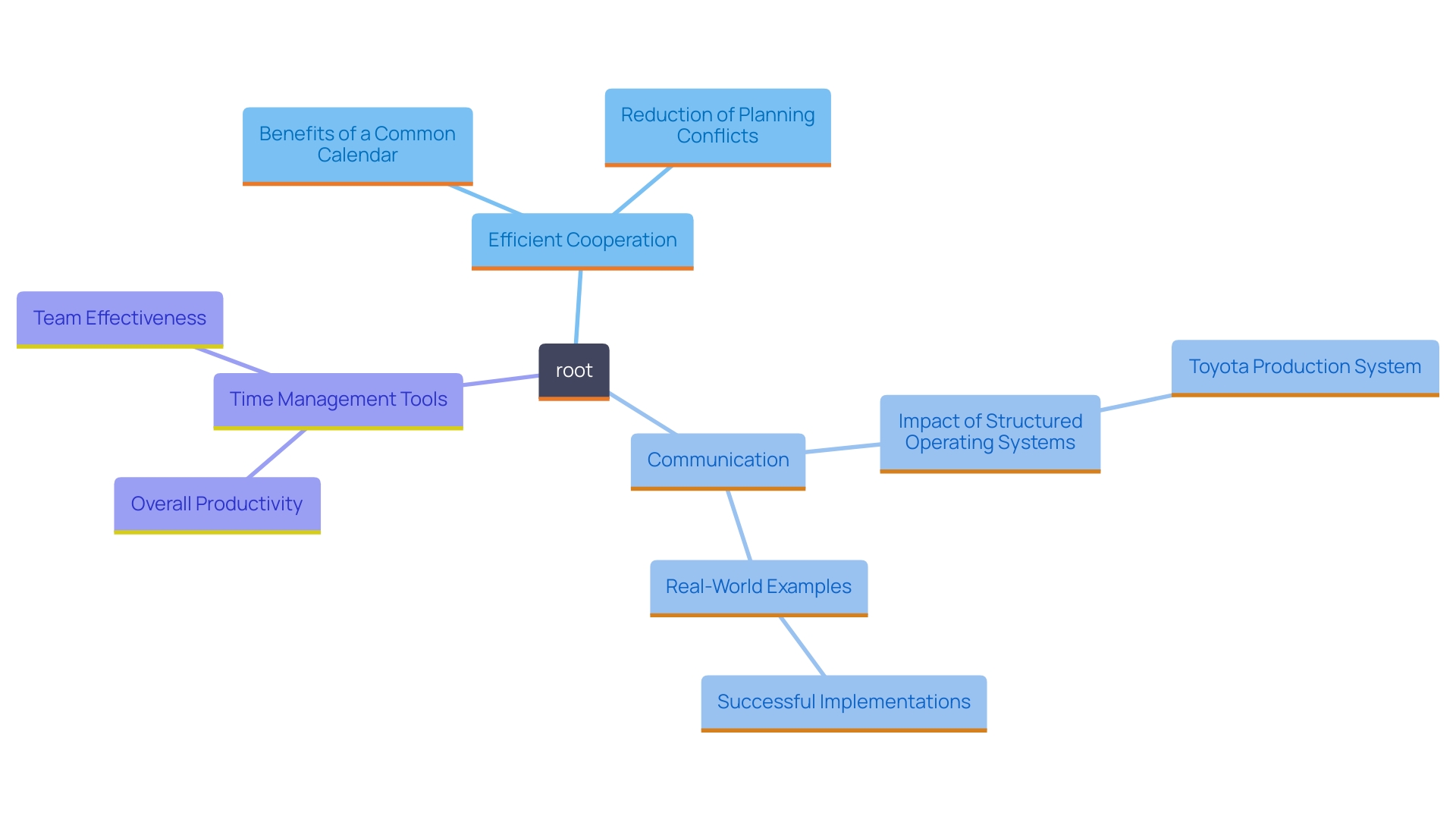
Improved Productivity
Clear communication is the cornerstone of a productive work environment. Employing a enables groups to remove appointment clashes and misunderstandings that can result in annoying idle time. This streamlined approach to appointment management not only enhances coordination but also fosters a smoother workflow. As group members can easily see their commitments and deadlines, they can concentrate on their core tasks without the disruption of unexpected meetings or overlaps.
Reflect on the expertise of the Twinkl group, who implemented Toggl Track for their planning requirements. This shift not only improved their time management but also significantly elevated their overall job satisfaction and productivity. By effectively managing their schedules, they have been able to meet expectations without the stress of time management surprises that once plagued their workflow. This type of effective planning is a transformative factor, enabling groups to concentrate their efforts on what is genuinely important.
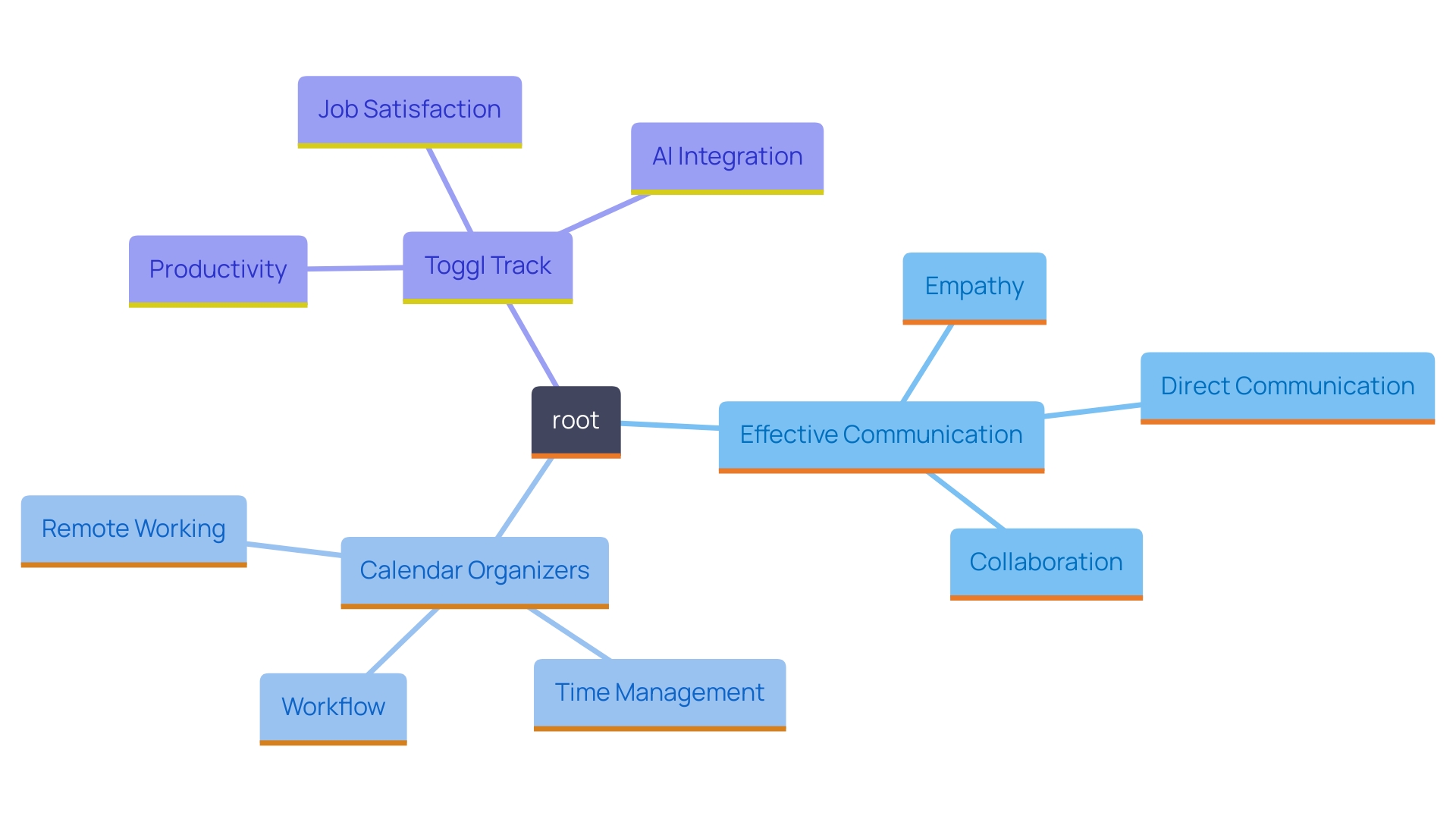
Choosing the Right Team Calendar Tool
Selecting the appropriate calendar resource is vital for enhancing productivity and facilitating smooth scheduling. With a plethora of options available, it’s important to consider a few that can significantly impact your group’s efficiency.
- Integration with Existing Platforms: Seek solutions that seamlessly connect with software your group already utilizes, such as project management applications or communication platforms. For instance, applications such as Google Calendar and Microsoft Outlook provide strong integration features that can simplify workflows and improve collaboration.
- User-Friendly Interface: A calendar application should be intuitive, making it easy for group members to navigate and utilize its features without extensive training. This is particularly crucial in today’s fast-paced environment where every second counts.
- Feature Set Tailored to Your Needs: Different groups have varying requirements, so it’s important to identify features that specifically address your group’s workflow. For example, if your group frequently arranges collective meetings, search for resources that feature choices for checking availability or dispatching automated reminders.
When assessing choices, take into account the variety of time management solutions available. Some products cater to NGOs, multinational enterprises, and small businesses, while others focus on the needs of digital nomads and casual users. As you explore, you might feel overwhelmed by the choices, but that’s normal. It’s all about finding what fits your specific operational needs.
For example, Cal.com and Acuity Scheduling are two contenders that serve a wide range of users, from sole proprietors to larger business structures. ‘These resources not only assist in arranging appointments but also guarantee that your planning process aligns well with your team’s overall goals.’. In a marketplace where the need for efficient scheduling solutions is swiftly growing, dedicating time to choose the appropriate option can bring considerable long-term advantages.
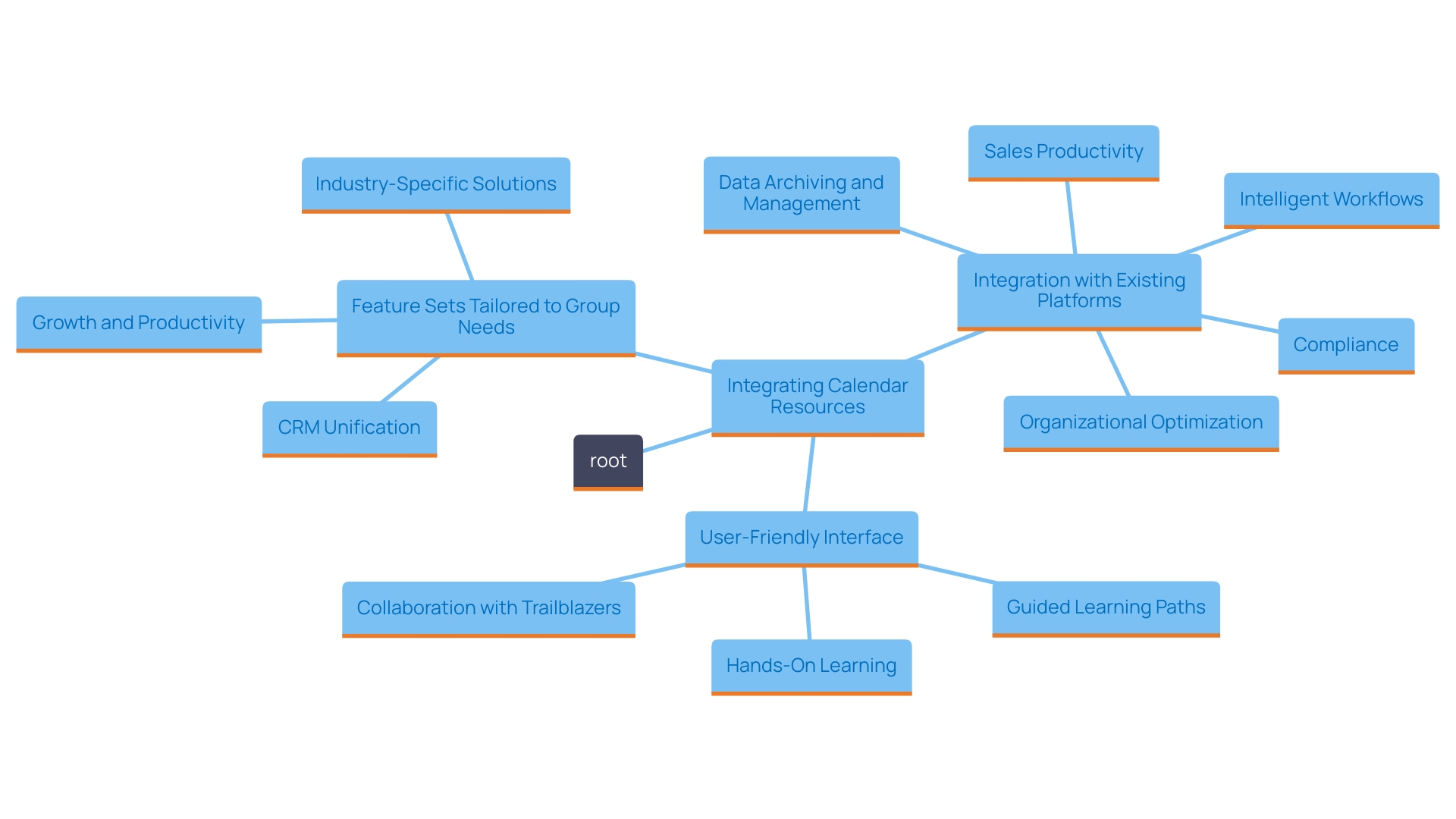
Features to Consider: User-Friendliness, Cost, Accessibility, and Security
When considering calendar scheduling tools, user-friendliness is a critical factor. An intuitive interface can significantly enhance adoption rates among group members, ensuring that everyone feels comfortable navigating the system. If the software is complex or cumbersome, you may find resistance from your team, ultimately impacting productivity.
Cost is another essential aspect to weigh. It’s important to seek resources that strike a balance between offering robust features and affordability. The appropriate instrument should not only satisfy your functional needs but also align with your budget without compromising quality.
Accessibility is key to modern scheduling solutions. An excellent should enable individuals to reach their agendas at any moment and from any place, ensuring that group members can remain updated and synchronized, no matter their whereabouts. This flexibility is particularly valuable in today’s hybrid work environment, where remote and in-office employees need seamless integration.
Lastly, security features must not be overlooked. Protecting sensitive information is paramount, especially as more companies move towards digital solutions. Search for resources that provide robust encryption and data safeguarding techniques to ensure your group’s information remains safe and uphold their confidence. As Bryntum highlights, convenience and security go hand in hand in today’s digital landscape, making the right choice crucial for operational success.
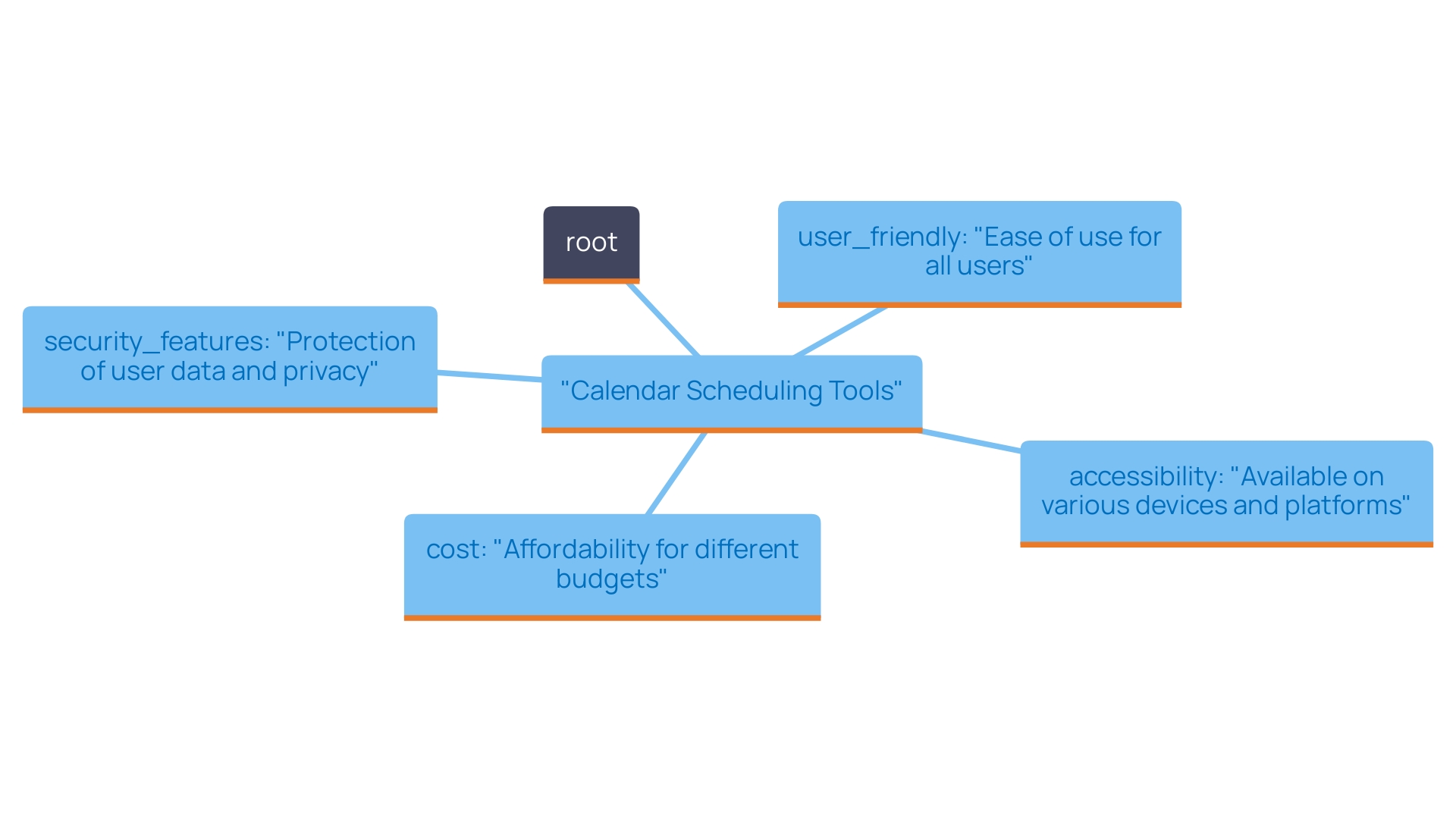
Best Practices for Implementing a Team Calendar
Implementing a group calendar effectively starts with involving your members in the selection process. This inclusion not only enhances morale but also guarantees that the resource selected addresses the particular requirements of your group. Once the tool is selected, providing comprehensive training sessions is crucial. These sessions should concentrate on how to navigate the features and functionalities of the schedule, ensuring that every group member feels at ease and assured in utilizing it.
Establishing clear guidelines for updating the schedule regularly is essential. Motivate your group to remain proactive in maintaining the schedule, which will improve collaboration and minimize communication gaps. Frequent evaluations of the schedule can act as a reminder of its significance and encourage participation. For instance, organizations that integrate continuous improvement in their operating systems witness notable benefits, such as increased productivity and better project outcomes.
Statistics show that 58% of American workers feel overwhelmed with daily tasks, emphasizing the need for effective tools such as a team schedule. By regularly engaging with the calendar as a group, you can align everyone’s priorities and responsibilities, ensuring that no one feels lost in the shuffle. This approach not only fosters a but also contributes to a more organized and effective work environment.
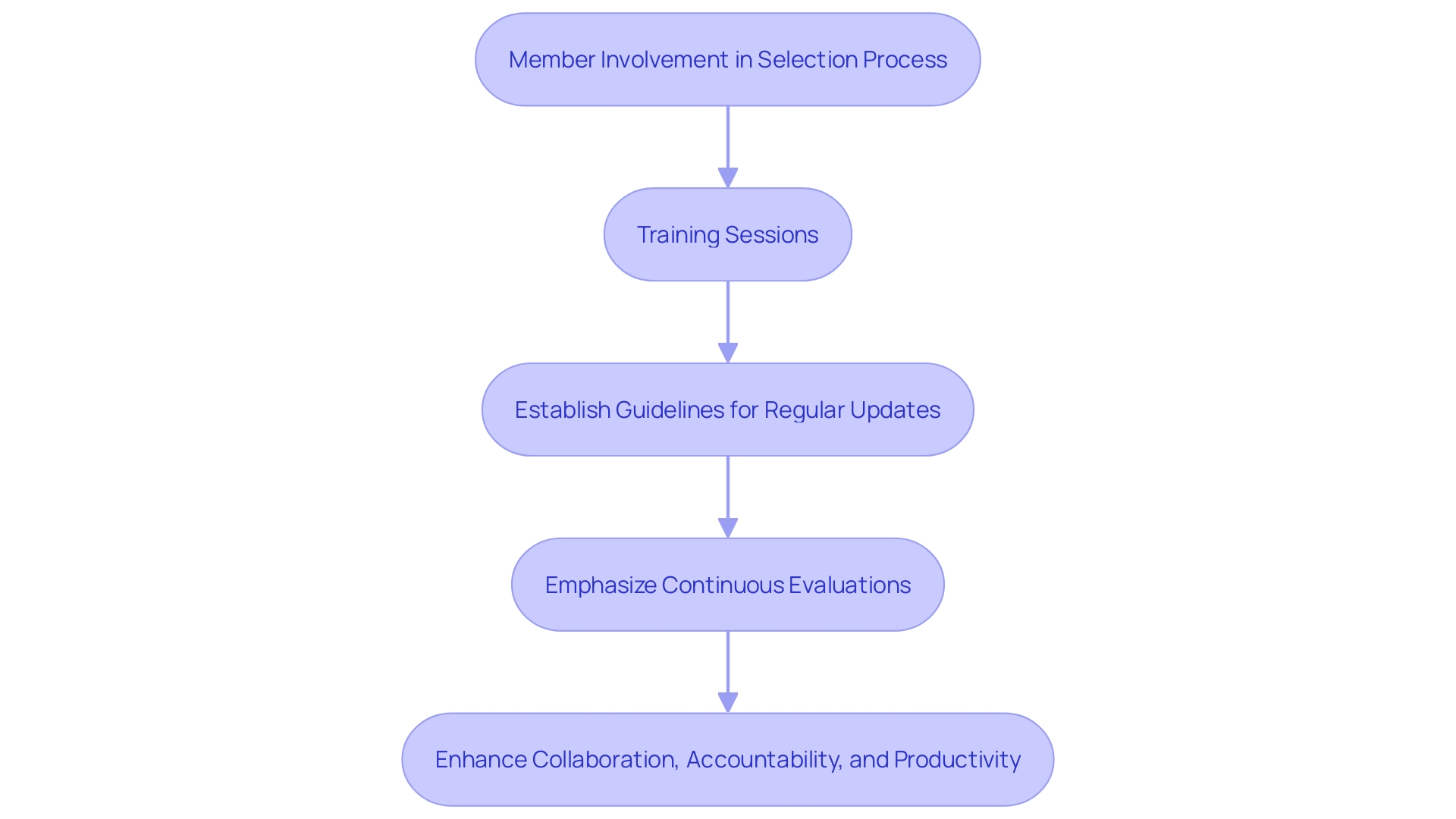
Conclusion
A well-implemented team calendar is more than just a scheduling tool; it acts as a vital component for enhancing collaboration, productivity, and overall efficiency within organizations. By consolidating commitments and deadlines into a single platform, teams can enjoy improved clarity and reduced confusion, allowing them to focus on their core tasks without the distractions of endless email exchanges. Real-world examples, such as those from Twinkl and Dynatrace, highlight how centralized scheduling systems can transform workflows and foster a culture of cooperation and accountability.
The benefits of using a team calendar extend beyond mere scheduling. Enhanced transparency and accountability empower team members to track progress and meet deadlines, while effective coordination eliminates the frustrations of overlapping commitments. Moreover, improved time management through visual representations of tasks enables teams to prioritize effectively and alleviate the stress of last-minute rushes.
With the right tools in place, organizations can not only streamline their operations but also cultivate a positive workplace culture.
Choosing the right calendar tool is crucial to maximizing these benefits. Factors such as integration capabilities, user-friendliness, and security must be considered to ensure that the selected solution aligns with the team’s unique needs. By involving team members in the selection process and providing adequate training, organizations can ensure a smooth transition to a shared calendar system.
Ultimately, a well-structured team calendar can redefine how teams operate, allowing them to focus on what truly matters. As organizations continue to navigate the complexities of modern work, investing in effective scheduling tools will be key to fostering collaboration, enhancing productivity, and achieving long-term success.
Frequently Asked Questions
What is the primary purpose of a group calendar?
A group calendar serves as an organizing tool that enhances operational efficiency and collaboration among team members by consolidating appointments and deadlines into a single accessible platform.
How does a group calendar improve clarity and reduce confusion?
By providing a clear view of each member’s commitments, a group calendar diminishes the risk of timetable conflicts and helps clarify responsibilities, thus fostering a unified work atmosphere.
What are some examples of organizations that have successfully implemented group calendars?
Twinkl, an educational publishing group, used Toggl Track to streamline their scheduling, resulting in improved productivity. Similarly, Dynatrace expanded its workforce and established a centralized scheduling system to enhance coordination among its distributed employees.
Why is effective calendar organization important for employee productivity?
Statistics indicate that a significant percentage of American workers feel overwhelmed by daily tasks. An efficient group calendar can alleviate this pressure, allowing employees to manage their time better and focus on high-impact tasks.
What specific tools can enhance group scheduling?
Tools like Cal.com, Toggl Track, Calendly, and Clockwise’s AI-powered assistant improve appointment management by simplifying the process of joining, canceling, or rescheduling meetings.
How does a shared calendar promote accountability and morale within teams?
A shared calendar fosters transparency by allowing team members to track each other’s commitments, leading to a culture of accountability and trust, which ultimately boosts group morale.
What should organizations consider when selecting calendar management resources?
Key factors include integration with existing platforms, user-friendly interfaces, tailored feature sets for specific needs, cost-effectiveness, accessibility, and security features.
How can a group effectively implement a calendar tool?
Involvement of all members in the selection process, comprehensive training on the tool’s features, and establishing guidelines for regular updates are essential steps for effective implementation.
What is the link between good calendar management and team collaboration?
A well-organized calendar simplifies communication and coordination of tasks, reducing planning conflicts and enabling smoother collaboration on projects.
How can frequent evaluations of the calendar improve its effectiveness?
Regularly reviewing and updating the calendar encourages active participation, aligns priorities, and reinforces the significance of the tool, contributing to a more organized work environment.
